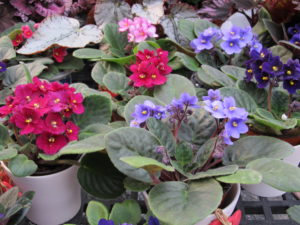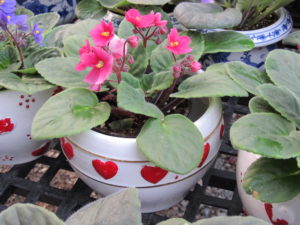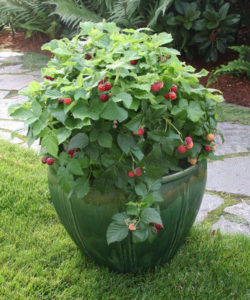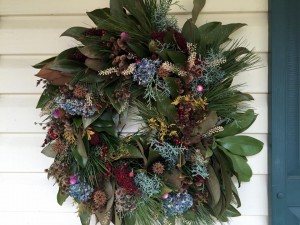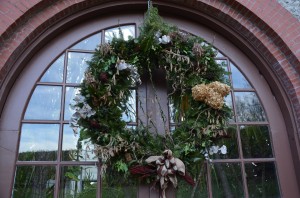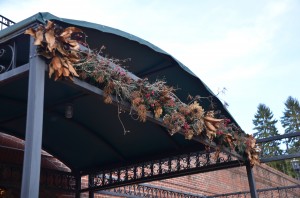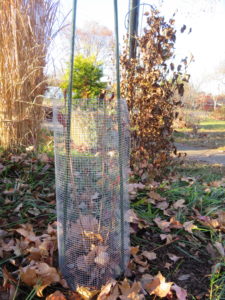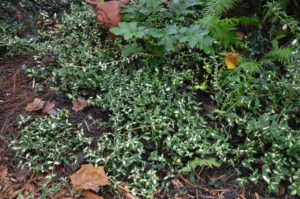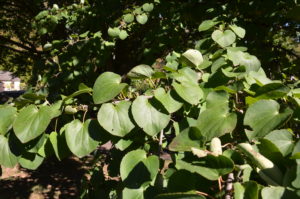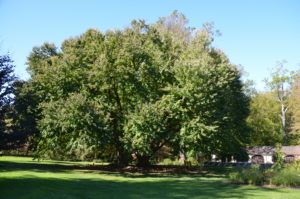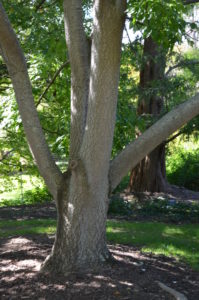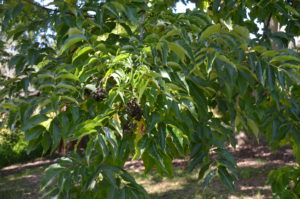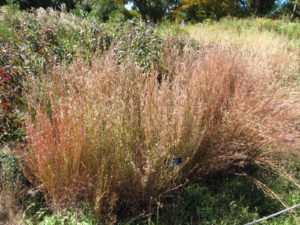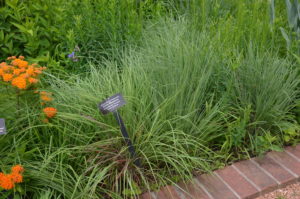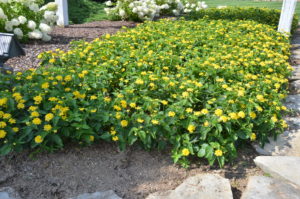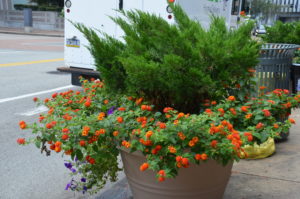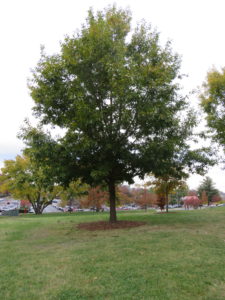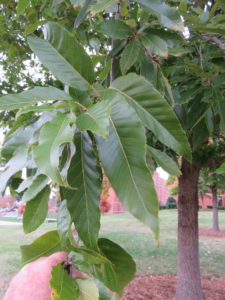African violets (Saintpaulia ionantha) or AVs are among the easiest flowering house plant to grow. They need indirect moderate to bright lighting and moist well-drained potting soil. Grow plants in plastic pots and not in clay (terra cotta). AVs should be repotted annually.
Here are some additional cultural tips:
Room temperatures: AVs thrive at room temperatures between 65 to 80 °F. Set plants away from cold drafty windows.
Watering: Keep soil moist, but permit soil to dry out 4-5 days between waterings. Water plants mostly from the bottom with room temperature water. Allow plant to absorb water from a saucer or tray for 20-30 minutes and drain off the extra. Cold water straight from the tap can cause leaf spotting and may contain harmful chlorides or fluorides. Do not allow plants to sit in water too long as AVs are susceptible to root rot diseases.
Plant nutrition: Feed with water soluble fertilizers such as Miracle-Gro® or Optimara® African Violet Food at one-half the package directions; feed the dilute solution twice as often from mid-February thru September. Cut back feeding to once monthly during the fall and winter months (October thru early February). If tap water contains fluoridated or chlorinated, store water in an open top container overnight to allow the chloride or fluoride gas to escape.
Lighting: Indirect sunlight or artificial lighting is best. Plants stop flowering and leaves become chlorotic (yellow) when they don’t receive enough light. Leaves and stems also stretch out and weaken. Too much sunlight can cause leaves to sunburn, and leaf stems (petioles) to droop downward; variegated leaf varieties may turn fully green. If light source is from a nearby window, rotate pots one-quarter turn weekly, perhaps after you’ve watered.
Many hobbiests grow their AV collection under special “grow lights” for 10-12 hours a day. Grow lights are generally mounted 18 to 20 inches above plants or 10 to 12 inches above small cuttings or miniature varieties. Connect lights to a timer, so they go on and off even when you are away.
Humidity/Air Circulation: Group plants close together but do not crowd them. Give violets enough room to grow and to maintain sufficient air circulation in order to prevent the growth of potentially harmful Botrytis and Powdery Mildew diseases. A room humidifier will also help over the winter and summer months when heat and air systems are drying out the room environment.

